
Do you have a question about the APRILIA SHIVER 750 ABS 2010 and is the answer not in the manual?
| Engine Type | V-twin, 4-stroke |
|---|---|
| Displacement | 749.9 cc |
| Compression ratio | 11.0:1 |
| Fuel system | Electronic Fuel Injection |
| Transmission | 6-speed |
| Final drive | Chain |
| ABS | Yes |
| Front Tire | 120/70 ZR17 |
| Rear Tire | 180/55 ZR17 |
| Dry Weight | 189 kg |
| Bore x stroke | 92 x 56.4 mm |
| Ignition | Electronic |
| Cooling system | Liquid-cooled |
| Maximum Power | 95 hp (70 kW) @ 9000 rpm |
| Maximum Torque | 81 Nm @ 7, 000 rpm |
| Front Brakes | Dual 320 mm discs |
| Seat Height | 810 mm |
| Fuel Capacity | 15 liters |
| Frame | Modular tubular steel frame |
| Rear Brakes | Single 245 mm disc, single-piston caliper |
Maintenance operations may need to be performed at half the intervals shown if the vehicle is used in demanding conditions.
Ensure engine running is done in well-ventilated areas to avoid carbon monoxide poisoning.
Fuel is highly flammable and explosive; refuel and maintain in ventilated areas with the engine off.
Engine and exhaust components get very hot; wear insulating gloves or wait for cooling before handling.
Coolant contains ethylene glycol, which can be flammable and cause burns with invisible flames.
Wear latex gloves when servicing the vehicle; used oil can cause skin injuries with prolonged contact.
Brake and clutch fluids can damage plastic/rubber surfaces; wear protective goggles.
Battery electrolyte is toxic and corrosive; avoid skin and eye contact, protect eyes as acid can cause blindness.
Ensure the side stand is fully retracted before setting off; do not rest weight on the side stand.
Do not remove mechanical or electrical components unless specified; some connectors may compromise vehicle operation if incorrectly installed.
Key identifying main vehicle components, with and without ABS.
Overview of dashboard layout and controls, including indicator location key.
Details the instrument panel components: RPM indicator, digital display, and warning lights.
Identifies the various warning and indicator lights on the vehicle's lighting system.
Explains the functions and displays shown on the digital instrument panel.
Indicates a failure detected in the instrument panel or electronic control unit.
Signals serious failures with flashing lights and alternating words 'URGENT' and 'SERVICE'.
Mode designed for smooth tourist riding, offering balanced engine performance.
Mode for more acceleration and a sporting feel; advised for expert riders on good grip roads.
Mode for wet or low-grip conditions, reducing torque and delivering it smoothly to prevent grip loss.
Details how to select and view data from the two available trip journals.
Menu for adjusting various vehicle settings like time, gear shift, backlighting, and code.
Access and manage chronometer functions, including start, view, and delete times.
Menu for interfacing with vehicle systems and performing diagnostics (requires dealer access).
Option to select the desired interface language for the instrument panel.
Steering is locked; engine and lights cannot be activated; key can be extracted.
Engine and lights are off; key can be extracted.
Engine can be started; key cannot be extracted.
Procedure to remove the windshield, involving undoing screws and detaching it from the headlamp.
Steps to secure and lock the saddle in place, ensuring it clicks into position.
Location and importance of the chassis number for parts purchasing and identification.
Location of the engine number, printed on the engine crankcase.
Essential checks before riding, including brakes, throttle, engine oil, and tires.
Procedure for starting the engine and adjusting mirrors for optimal visibility.
Steps for securing the vehicle after stopping, including neutral gear and brake application.
Proper procedure for mounting the motorcycle, ensuring balance and safety.
Proper procedure for dismounting the motorcycle, ensuring stability and safety.
Importance of checking tyre pressure regularly, especially before and after long trips.
Inspect tire tread for wear; worn tires compromise traction and handling.
Guidelines for tire replacement based on wear or puncture size.
Procedure for checking and topping up coolant, ensuring the engine has cooled down.
Instructions for connecting and operating the battery charger.
Procedure for checking fuses to diagnose electrical component or engine starting failures.
Diagram and list of bulbs for the headlamp: low beam, high beam, and tail lights.
Procedure for adjusting vertical headlight beam alignment using a screwdriver.
Visual inspection guide for checking front and rear brake pad wear.
Steps for preparing the vehicle for storage to prevent damage from inactivity.
Instructions for cleaning painted surfaces, engine parts, and aluminum components.
Specific instructions for cleaning headlights, emphasizing gentle rubbing and rinsing.
Procedure for checking chain vertical oscillation and ensuring consistent clearance.
Inspection of chain, pinion, and sprocket for wear, damage, or missing parts.
2100 mm (82.68 in)
800 mm (31.50 in)
1135 mm (44.69 in)
810 mm (31.89 in)
1440 mm (56.69 in)
210 kg (463 lb)
M551M
90° V-twin engine with 4 valves per cylinder and 2 overhead camshafts.
749.9 cm³ (45.76 cu.in)
92 x 56.4 mm (3.62 x 2.22 cu.in)
6-speed mechanical gearbox with left-side foot gearshift lever.
15 liters (3.30 UKgal; 3.96 USgal) total capacity.
3 liters (0.66 UK gal; 0.79 US gal) reserve capacity.
3.0 liters (without filter change) or 3.2 liters (with filter change).
1.8 liters (0.40 UK gal; 0.48 US gal) capacity.
2 seats.
190 kg (418.9 lb) total load including rider, passenger, and luggage.
Primary drive ratio: 38/71.
14/36 (secondary).
17/32 (secondary).
20/30 (secondary).
22/28 (secondary).
23/26 (secondary).
24/25 (secondary).
16/44.
Endless chain with sealed links, 108 links total.
525 ZRPK.
Electronic multipoint fuel injection system.
52 mm (2.05 in).
Premium unleaded petrol, minimum octane 95 (NORM) and 85 (NOMM).
Die-cast aluminum plates and high-strength steel tubular chassis.
109.6 mm (4.29 in).
Upside-down hydraulic telescopic fork, 43 mm (1.69 in) stanchions.
120 mm (4.72 in).
Oscillating swingarm with adjustable hydraulic single shock absorber.
122 mm (4.80 in).
Double floating disc (320mm), radial calipers with four plungers.
Light alloy rims with extractable bolt.
3.50 x 17".
5.50 x 17" or 6.00 x 17".
DUNLOP SPORTMAX QUALIFIER - METZELER M3.
120/70 ZR17" (58W).
1 passenger: 2.3 bar; 2 passengers: 2.5 bar.
NGK CR7EKB.
0.6 - 0.7 mm (0.024 - 0.028 in).
5 kOhm.
12 V - 10 Ah or 12 V - 12 Ah.
30A - 40A.
3A, 10A, 15A, 20A.
12 V - 55 W H7.
12 V - 55 W H7.
12V - 5W x 2.
12V - 10W.
12V - 5W.
12V - 5/21W x 2.
LED.
LED.
LED.
LED.
LED.
LED.
Includes a toolkit pouch.
Includes a reversible screwdriver.
Includes a handle for the reversible screwdriver.
Includes an 11-13 mm open-ended spanner.
Includes L-shaped hex Allen keys in various sizes.
Includes small pliers designed for extracting fuses.
Includes a double open-ended spanner (8-10 mm).
Includes a wrench for adjusting shock absorber preloading.
Includes a flattened cylindrical wrench adaptor.
Table detailing scheduled maintenance tasks and their corresponding mileage intervals.
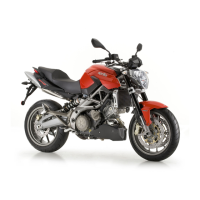
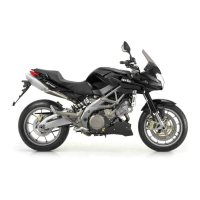
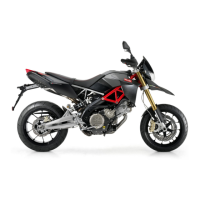
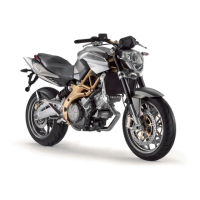
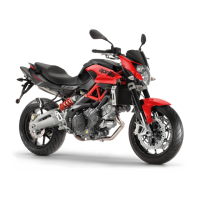
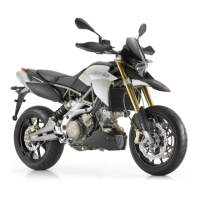
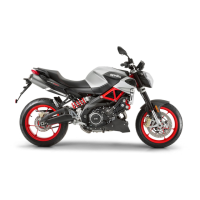
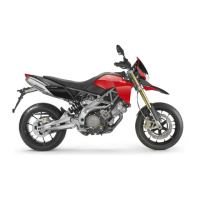
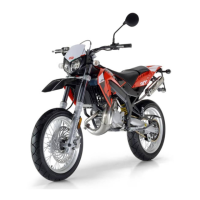
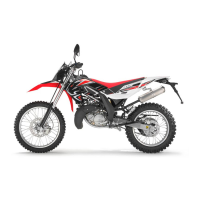
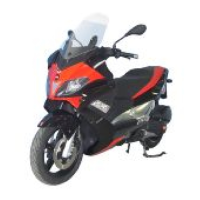
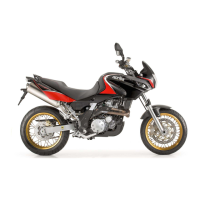
